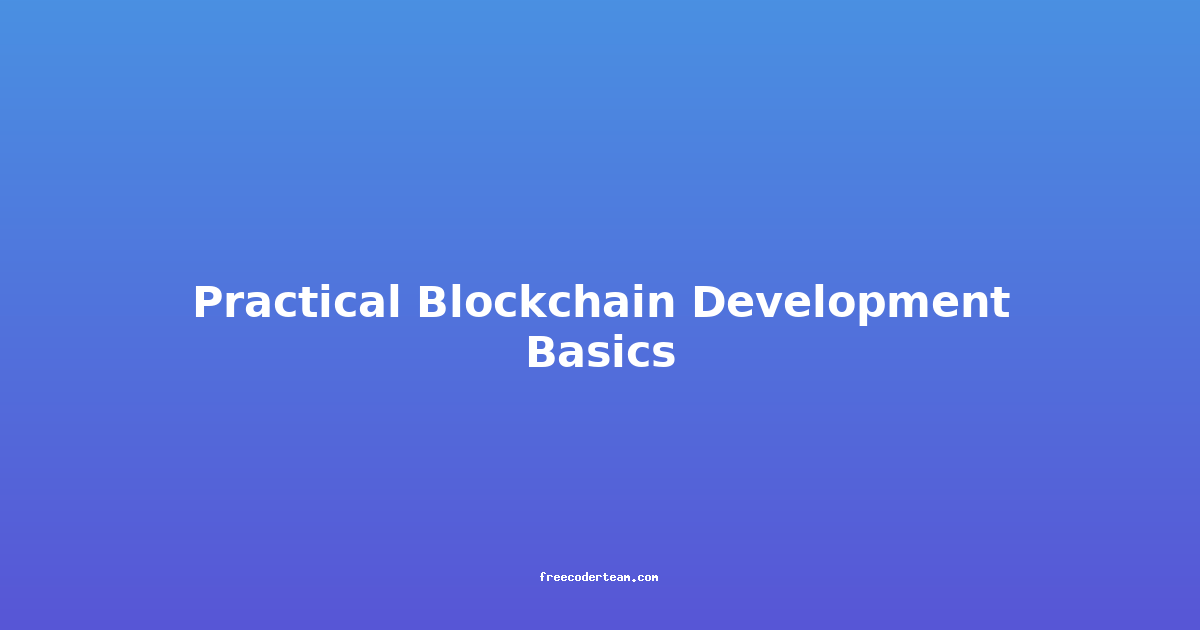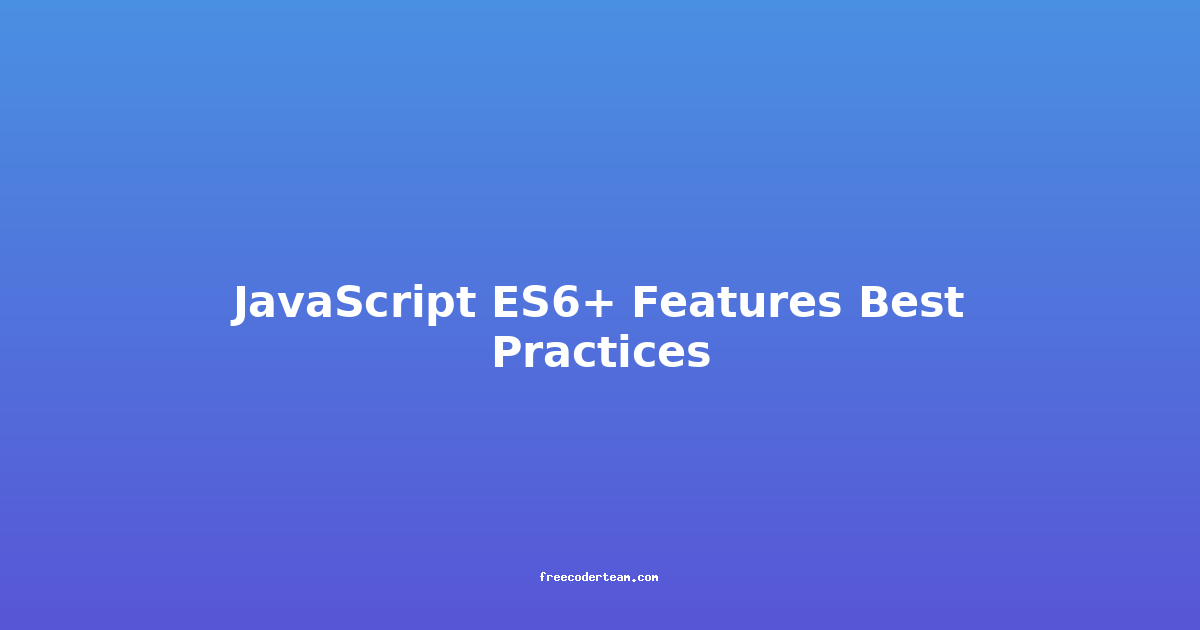Practical Blockchain Development Basics
Blockchain technology has revolutionized industries by providing a decentralized, transparent, and secure way to manage data and transactions. Whether you're a developer looking to build decentralized applications (dApps) or simply curious about blockchain, understanding its fundamentals is crucial. In this comprehensive guide, we'll explore the basics of blockchain development, including key concepts, development tools, best practices, and actionable insights.
Table of Contents
- What is Blockchain?
- Key Concepts in Blockchain Development
- Getting Started with Blockchain Development
- Practical Example: Building a Simple Smart Contract
- Best Practices in Blockchain Development
- Challenges and Considerations
- Conclusion
What is Blockchain?
A blockchain is a distributed ledger technology that records transactions across a network of computers. Each block in the chain contains a list of transactions, and these blocks are linked using cryptographic techniques, ensuring the integrity and immutability of the data. Blockchain is best known for its use in cryptocurrencies like Bitcoin, but its applications extend to supply chain management, finance, healthcare, and more.
Key Concepts in Blockchain Development
1. Decentralization
One of the core principles of blockchain is decentralization. Unlike traditional systems that rely on a central authority, blockchain operates on a peer-to-peer network where nodes (computers) validate and store transactions. This eliminates the need for intermediaries, reducing costs and increasing transparency.
2. Consensus Mechanisms
Consensus mechanisms ensure that all nodes in the network agree on the state of the blockchain. Common consensus algorithms include:
- Proof of Work (PoW): Used by Bitcoin, where miners solve complex mathematical puzzles to validate transactions.
- Proof of Stake (PoS): Used by Ethereum 2.0, where validators stake their cryptocurrency to secure the network.
- Delegated Proof of Stake (DPoS): Used by platforms like EOS, where users vote for delegates who validate transactions.
3. Smart Contracts
Smart contracts are self-executing contracts with the terms of the agreement directly written into code. They run on blockchain platforms like Ethereum and automatically enforce the rules defined in the contract. Smart contracts are the backbone of decentralized applications (dApps).
4. Blockchain Platforms
Several blockchain platforms are available for development, each with its own features and use cases:
- Ethereum: The most popular platform for developing smart contracts and dApps.
- Hyperledger Fabric: Designed for enterprise use, offering high scalability and privacy.
- Solana: Known for its high throughput and low fees.
- Polkadot: A blockchain network that connects various blockchains, enabling interoperability.
Getting Started with Blockchain Development
Setting Up a Development Environment
To start developing on a blockchain, you'll need the following:
- Blockchain Platform SDK: Most platforms provide SDKs for integrating with their networks. For example, Ethereum has the
Web3.jsorEthereum.jslibraries. - Smart Contract Development Tools: Tools like Solidity (for Ethereum) or Rust (for Solana) are used to write smart contracts.
- IDEs and Tools: Popular choices include Visual Studio Code with extensions like Solidity Support, and Remix IDE for Ethereum development.
- Test Networks: Use test networks like Rinkeby (for Ethereum) to deploy and test your contracts without spending real cryptocurrency.
Choosing a Blockchain Platform
- Ethereum: Ideal for developing dApps due to its large developer community and extensive ecosystem.
- Solana: Suitable for applications requiring high transaction throughput and low fees.
- Hyperledger Fabric: Best for enterprise solutions that require privacy and customization.
Practical Example: Building a Simple Smart Contract
Let's build a simple smart contract using Solidity, the programming language for Ethereum.
Step 1: Install Tools
- Node.js and npm: Required for managing dependencies.
- Truffle Framework: A popular development framework for Ethereum.
- Ganache: A local blockchain environment for testing.
npm install -g ganache-cli truffle
Step 2: Create a New Project
truffle init
Step 3: Write the Smart Contract
Create a file Counter.sol in the contracts directory:
// SPDX-License-Identifier: MIT
pragma solidity ^0.8.0;
contract Counter {
uint256 public count;
constructor() {
count = 0;
}
function increment() public {
count += 1;
}
function decrement() public {
require(count > 0, "Counter cannot go below zero");
count -= 1;
}
}
Step 4: Configure Truffle
Edit the truffle-config.js file to include your Ganache network:
module.exports = {
networks: {
development: {
host: "127.0.0.1",
port: 7545,
network_id: "*"
}
},
compilers: {
solc: {
version: "0.8.0"
}
}
};
Step 5: Compile and Deploy
- Compile the contract:
truffle compile - Start Ganache:
ganache-cli - Deploy the contract:
truffle migrate
Step 6: Interact with the Contract
Use the truffle console to interact with the deployed contract:
truffle console
In the Truffle console:
const Counter = artifacts.require("Counter");
Counter.deployed().then(instance => instance.increment());
Counter.deployed().then(instance => instance.count.call()).then(count => console.log("Count:", count));
Best Practices in Blockchain Development
-
Secure Coding Practices:
- Always validate inputs to prevent exploits like integer overflows.
- Use safe math libraries (e.g.,
SafeMathin Solidity) to handle arithmetic operations. - Avoid reentrancy attacks by using the
check-effects-interactionspattern.
-
Gas Optimization:
- Minimize the number of storage variables and operations to reduce gas costs.
- Use
viewandpurefunctions for read-only operations to save gas.
-
Testing:
- Write comprehensive unit tests using frameworks like
MochaorHardhat. - Use fuzz testing tools like
DappToolsto test edge cases.
- Write comprehensive unit tests using frameworks like
-
Code Audits:
- Conduct regular security audits to identify vulnerabilities.
- Use tools like
MythrilorSlitherfor automated audits.
-
Documentation:
- Document your contracts and functions clearly to ensure maintainability.
Challenges and Considerations
- Scalability: Blockchain networks like Ethereum can face scalability issues, leading to high gas fees.
- Security: Smart contracts are immutable, so bugs can be costly to fix.
- Regulatory Compliance: Ensure your application complies with relevant laws and regulations.
- Energy Consumption: Proof of Work consensus mechanisms can be energy-intensive.
Conclusion
Blockchain development offers a unique opportunity to build decentralized, transparent, and secure systems. Whether you're developing a cryptocurrency, a supply chain solution, or a dApp, understanding the core concepts and following best practices is essential. By leveraging tools like Ethereum, Solidity, and Truffle, you can start building your own blockchain applications today.
Remember, blockchain is a rapidly evolving field, so staying updated with the latest developments and best practices is key to success. Happy coding!
Resources:
Feel free to explore and experiment with blockchain technology—it's an exciting journey! 🌟
#Blockchain #Development #SmartContracts #DApps




